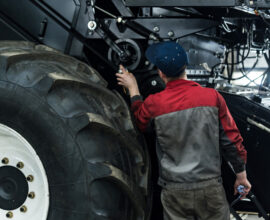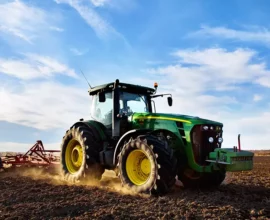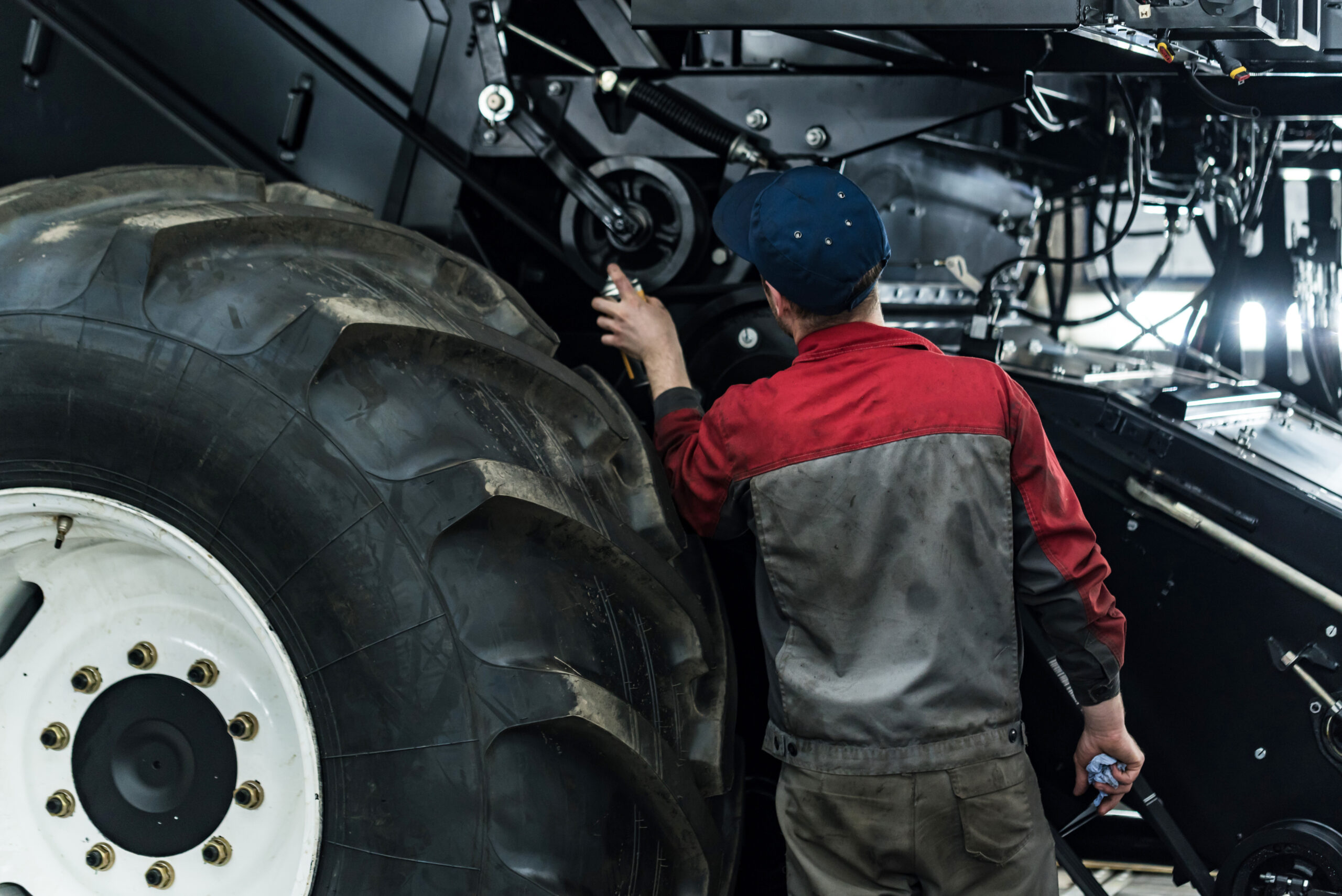By Dave Baiocchi
Acquiring equipment in today’s marketplace has become a more complex and confusing process than in years past. One reason is that technology has afforded a wider array of choices, options, and performance characteristics. Dealers are now able to offer customized “solutions” rather than just “equipment.” These solutions can now be targeted to your unique set of applications.
Each task that you require your equipment to perform comes with its own set of requirements. You will normally have multiple goals in this regard:
- Increase the volume of work performed
- Increase the quality, and efficiency of the work
- Decrease the overall costs of getting the work accomplished
- Create a minimal impact on the environment while accomplishing the work
All 4 of these factors are directly connected to, and in many ways governed by the power train of the equipment you wish to acquire. Absent an education on the evolution of engine design, this can be a confusing task. What options are available? What fuel is best to use? What do they mean by HD-5? Interim Tier 4? Final Tier 4? Biodiesel?
This article will seek to demystify the myriad of questions surrounding fuel choices, and give you a firm understanding of the different engine types and environmental impacts surrounding each type of fuel used today in agricultural and industrial equipment.
Gasoline
The first gasoline engine was invented in Germany in 1876. By 1886 Karl Benz (yes, THAT Benz), began producing automobiles with gasoline powered, internal combustion engines. What Karl Benz invented in a former bicycle repair shop in Mannheim Germany set fire to a new world of motor driven power. The internal combustion engine was a catalyst that would help usher the world into the industrial revolution.
The first gasoline powered tractors were a uniquely American invention. The idea was first conceived in 1892 by Iowa wheat farmer John Froelich who was frustrated by the bulk and difficulty of threshing wheat with steam powered machinery.
His first attempts at mounting a one-cylinder engine on the running gear of his steam tractor were personally successful. He started the Waterloo Gasoline Tractor Engine Company to try and replicate his achievements, but none of his early efforts were commercially successful. Froelich continued to develop better versions of his machine, and by 1914 both the demand for mechanical farm power, and the improvements to his equipment resulted in his eventual success. His company was purchased by the John Deere implement company in 1918.
John Deere, continued to improve on Froelich’s design and up until the mid-1930’s, the John Deere 2- cylinder gas engine was the preferred power train to get work done on the farm. In 1935, the International Harvester Corporation (IHC) introduced their model WD-40. This tractor featured a diesel- powered engine.
It didn’t take long to see that diesel fuel had decided advantages over gasoline. The most notable advantage was horsepower. Gasoline powered engines need much faster RPM’s to generate horsepower, and when the engine was under a load, the subsequent drop in horsepower was significant. Peak horsepower for a diesel engine is about half that of a comparable gasoline version, and the horsepower is much more consistent through the range. Diesel power is not nearly as dependent on engine speed so the “power band” is much more versatile and reliable.
So, why would someone even consider a gasoline powered tractor? The answer goes back to goals and applications. Gasoline engines are less expensive. Fuel is widely available, easily storable, and gasoline tends to be the fuel of choice for automotive and small engine applications. If your need for horsepower is negligible, and your use of the machine is limited, gasoline may still be a valid choice.
Normally, gasoline powered tractors are only available on smaller horsepower “lawn and garden” tractors for this reason.
LPG
Liquid Petroleum Gas is another popular power choice especially in industrial applications. This fuel is a pressurized gas made up primarily of propane and butane. LPG’s applicability to agricultural equipment is muted for the same reasons as gasoline. LPG engine power works using the same principle as gasoline power. Fuel and air are introduced into the combustion chamber, pressurized by the piston, and ignited by a spark plug to create combustion. The RPM to power ratio in LPG, when compared to gasoline is very similar.
Some consumers choose LPG because of the relative costs of the fuel itself. On average engine fuel grade LPG will cost about 45% less than gasoline. The tradeoff however comes in efficiency. LPG engines consume about 20% to 25% more fuel to get the same work accomplished. So, although aggregate fuel costs can be less, overall fuel consumption will be greater.
Aside from the total cost of fuel, LPG is also chosen for its environmental impact, especially in enclosed environments. Both diesel and gasoline engines produce exhaust gasses that are noxious and toxic. Long term exposure to these gasses in an enclosed environment can cause sickness or death.
The exhaust from LPG engines produces far less carbon monoxide and far fewer nitrogen oxide emissions (NOx) than either gasoline or diesel. One diesel engine will emit 120 times the amount of NOx that a comparable LPG engine will emit. This is why LPG is the preferred fuel for forklift trucks, and industrial vehicles that are constrained to operate in enclosed environments.
This does not mean to suggest that LPG engines are exempt from emissions regulations. In recent years, the EPA has enforced new emissions standards on ALL internal combustion engines. For this reason, you will find that all new equipment powered by gasoline or LPG have computer-controlled fuel injection systems, with exhaust sensors, and catalytic convertors. Carbureted fuel systems are a thing of the past, even with what some regard as “clean burning” fuels like LPG.
LPG is usually distributed by suppliers that specialize in this fuel type. LPG storage requires high pressure tanks, and access to the fuel is more difficult than comparable liquid fuels. Where a significant quantity of the fuel is needed, the supplier will normally provide a rental tank out of which fuel can be pumped into the smaller cylinders that serve as fuel tanks for the equipment. This is a much more cumbersome process due to the pressurized nature of the fuel.
LPG comes in three different grades. Commercial grade, HD-10, and HD-5. Premium fuel for use in powered equipment is designated HD-5. The difference between the grades is the amount of propylene removed from the fuel during the refining process. The fuel specification for HD-5 limits propylene to only 5% by volume.
When LPG is processed through the fuel system, propylene will leave behind a waxy, and tar-like substance. The “HD” refers to these “heavy deposits”. When too much of this residue builds up on sensitive fuel components, it can eventually render the fuel system inoperative. All OEM’s will specify that only certified HD-5 fuel should be used. HD-10 has twice the propylene, but is used primarily for residential heating, appliances and propellant applications not affected by the heavy deposits. Commercial grade LPG is even worse, and is primarily used for processing chemicals.
The grading of LPG is a bit of a moving target. There is really very little enforcement in the industry and mixed grade fuel storage has become a bit of a problem. Even when the supplier can prove HD-5 purity, the TANK out of which the fuel is being transferred may have held a lower grade fuel. Heavy metals, dirt, tar, and waxy deposits all accumulate in these holding tanks, and end up being pumped right into the fuel vessels. Additional filtration both at the outbound tank line, and at the inbound fuel line into the machine are measures that can save trouble and money.
Diesel
The diesel engine was created by Rudolf Diesel in 1896. His invention was initially used as a more efficient replacement for stationary steam engines. In the 1910’s they were incorporated into submarines and ships. In the 1920’s they started to show up in locomotives and electricity generation plants. Finally, in the mid 1930’s the first diesel powered heavy equipment and farm tractors appeared in the marketplace.
We have already discussed the fact that when horsepower is required to get the job done, diesel power provides the widest possible power range at the lowest possible engine RPM.
Much of this is due to the manner in which the diesel engine creates power. Unlike gasoline or LPG engines, diesel engines do not employ spark plugs to create combustion. Gasoline engines introduce and then compress a mixture of fuel and air inside the cylinder. The spark plug then “ignites” the compressed mixture. Diesel engines work differently in that the air inside the cylinder is compressed BEFORE fuel is introduced. Heat is created by simply pressurizing the air in the chamber. The makeup of the diesel fuel is such that it self-ignites based on the ambient temperature of the air in the pressurized cylinder. A timed electrical spark is not necessary.
Once the engine is running, the compression ratio inside the diesel engine is twice that of a comparable gasoline version. This provides the torque and horsepower at lower RPM’s that is so important in both industrial and agricultural equipment.
Another enormous advantage to using diesel engines is fuel consumption. Users of diesel engines can expect 20%-35% better fuel economy than the users of gasoline engines. Expenditures on diesel engine maintenance is also a plus, as there are no ignition components to replace or adjust. Because they operate at lower RPM’s diesel engines also tend to run cooler than comparable engines. This leads to longer overall life of the engine, doubling or even tripling the effective life of a diesel engine, over a comparable gasoline version.
Diesel engines do have a downside. Diesel fuel is thicker and more oily than other engine fuels, and contains compounds like sulfur and other hydrocarbons that make diesel emissions especially toxic. In recent years, the EPA has enacted a series of compliance measures that slowly lowered (over a number of years), the allowable HC, NOx, and particulate matter emissions from diesel engines. The first wave of regulations applied only to on-road equipment. The second wave of regulations targeted off road equipment like construction equipment, forklift trucks, and agricultural machinery. The program instituted a series of “tiers” that allowed OEM’s to improve their diesel technology over a period of years.
Tier 0 – Pre 1996
Tier 1 – 1996 to 2000
Tier 2 – 2001 to 2006
Tier 3 – 2006 to 2008
Interim Tier 4 – 2008 to 2013
Tier 4 Final – 2013-2015
Each consecutive tier commanded a lowering of allowable noxious emissions. Today, all diesel engines must be compliant with Tier 4 Final regulations. At the same time that these regulations were being enforced on OEM’s and engine manufacturers, the EPA also placed regulations on diesel fuel refiners. In the 1990’s diesel fuel contained as much as 5,000 parts per million of sulfur. Starting in 2006, the EPA phased in regulations dropping allowable sulfur to only 15 parts per million. Today all commercially available diesel fuel has to meet this requirement, and the fuel is now known as ultra-low sulfur diesel (ULSD).
Even with the lower sulfur content, in order to meet the Tier 4 final mandate, diesel engine manufacturers had to incorporate additional emissions equipment. The device now being used is called an exhaust gas recirculator. Some of the exhaust gasses, instead of being routed directly to the tailpipe, are now redirected to a chamber where they are treated with an aqueous urea solution, and then “recycled” back into the combustion chamber for a 2nd burn before being expelled. A diesel particulate filter is then used on the tailpipe to complete the process and meet the standard. This additional equipment is now required on all diesel engines (automotive, on-road and off-road) in order to stay compliant with the EPA mandates.
Biodiesel
Although not an extremely popular option as yet, Biodiesel is an alternative fuel that has the ability to run in most modern diesel engines. Bio-diesel is a fuel made from plant-based sources that has similar ignition, burn and power characteristics as petroleum-based diesel. Most of the major OEM’s have approved some form of biodiesel for use in their equipment.
The allure of biodiesel is sustainability. Sources for biodiesel are renewable, simply grown, and easily processed without harm to the environment. Most biodiesel is a mixture of plant-based oil (even waste oil) from palm, canola, soybeans, or rapeseed. These oils are then processed with animal fat and alcohol to create a burnable substitute for petro-diesel.
Bio-diesel has its downside. Although usable, most diesel engines were engineered for use with petro-diesel. Biodiesel lacks some of the lubrication qualities of petro-diesel and as a result B100 (or pure biodiesel) may be unsuitable for long term use. Most OEM’s have published statements on the acceptable use of biodiesel, with many suggesting the use of a petro/biodiesel blend. B20 (a 20% biodiesel content mix) is a suitable alternative in most cases. Long term use of biodiesel also may cause the emissions components on machinery not to operate properly.
Read the OEM statements carefully on the use of biodiesel, with particular regard for emissions controls and warranty coverage.
Dave Baiocchi has served on several executive boards and committees during his tenure in the material handling industry, including being a member of OEM dealer advisory councils for both sales and aftermarket. He has been a featured speaker at MHEDA conferences, and has hosted MHEDA events at his dealership. Dave also writes monthly aftermarket articles for Material Handling Wholesaler Magazine.
The aftermarket programs that Dave has pioneered have proven popular with his contemporaries all over the country. Dave started Resonant Dealer Services in 2013, as a platform to share these ideas with other dealers. In 2016 Dave sold his interest in J.M. Equipment Inc, so that he could pursue expanding this venture on a full time basis. His 35 years in the equipment industry, coupled with his leadership ability and the passion to teach others, uniquely qualifies him for this task.










